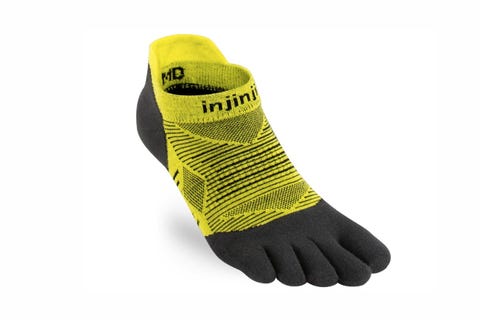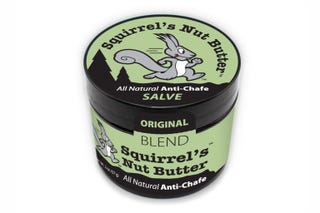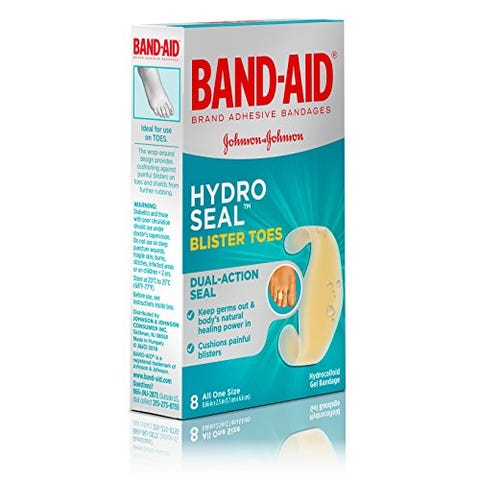Can Microbial Shield in Socks Make My Feet Burn
To put it simply: Dealing with blisters is an actual pain. If you're reading this, you probably already know that blisters are those red, raised areas that look like bubbles and occur mostly on the feet for us runners. Located on the upper layer of skin, they often fill with fluid and may also hurt or itch.
Many runners incur them during races, especially marathons, due to prolonged friction between your skin and sock or shoe. But blisters can pop up at any time, including during training runs. Non-running footwear can be to blame, as well.
While most blisters don't pose a serious health risk, they shouldn't be taken lightly. A painful blister can sideline a runner—or worse, get infected, especially if you use an unsanitary needle to pop it. Here's a complete guide to blisters and our picks for the best products to treat and prevent them.
Common Causes of Blisters
Friction leads to annoying, painful blisters. The culprits are usually our socks, shoes, or both rubbing against our skin. Anything that intensifies rubbing can start a blister, including a faster pace, poor-fitting shoes, and foot abnormalities, such as bunions, heel spurs, and hammertoes. Heat and moisture intensify friction by causing your feet to swell.
Blisters commonly pop up during races or long runs when mileage is increased and friction occurs without intervention. Your body responds to this friction by producing fluid, which builds up beneath the skin that's being rubbed.
Since moisture is also a factor, races are the perfect breeding ground for blisters: You're sweating more by running faster and longer, sloshing through water stations, and if the weather is warm, possibly pouring water over your head.
Blister Treatment
If you have a large blister that's big, nasty, even purple, and it's affecting how your toes bend, give it a day or two to shrink, says Jordan Metzl, M.D., a sports medicine physician at the Hospital for Special Surgery in New York City and a marathoner. If it doesn't improve, you might need to have your doctor pop it in the office under sterile conditions so it doesn't get infected.
If you have a small blister that's not prohibiting your movement, as tempting as it is to touch it, just leave it alone. "When the skin and the membrane of the skin are compromised by popping the blister, all of the bacteria that live on the skin normally can invade and could cause inflammation or an infection right away," Metzl says.
You could end up making a very small problem much bigger by puncturing the barrier. You should also leave small blood blisters intact, too. Otherwise, you risk getting bacteria in your bloodstream. Cover it up so the swelling goes down, then try to fix the problem that caused it. Here are some prevention methods to treat small blisters:
- Cut a hole the size of the blister in the middle of a piece of moleskin
- Place the moleskin over the blister and cover with gauze
- Let the blister dry out and heal on its own, or try covering the blister with a waterproof pad
If you absolutely must pop a blister (for example, if you're traveling and can't see your doctor), use caution. Metzl suggests cleaning the area and needle with soap and water and following with an antibiotic ointment. Then be sure to clean the area regularly to prevent infection.
One more note: A blister under a nail is best treated by a professional. You never want to deliberately remove the toenail.
Blister Prevention
To stop blisters before they even start to form, Metzl recommends making sure you're wearing running shoes in the right size. And before you run, coat risky areas with products that dry out your skin, such as baby powder or anti-chafing powder, to minimize the effects of sweating. You can also use a lubricant such as Vaseline or anti-chafing balm to ease pain caused by rubbing.
Shoes that are too small will cause blisters under the toenails or on the tops or tips of the toes. There should be a thumb's width of space between the toes and the end of the toe box. Pay attention to your socks, too: They should fit without bunching up at your toes or slipping down your heels, which are common blister hot spots.
If you suspect your shoes don't fit, consult with your local running store to have an expert help you find your size via a virtual or in-person fitting, or look for socks with reinforced heels and toes to help reduce friction.
Here's everything we recommend to stave off blisters and heal them after they occur.
How We Selected
Every product here has been thoroughly vetted by our team of test editors. We research the market, survey user reviews, speak with product managers, and use our own painful blister experiences to evaluate which products provide the most help. Most have been tested by our staff, and those that haven't have been carefully chosen based on their effectiveness and value. Here are our top picks for treating and minimizing blister pain.
Injinji Run Lightweight No-Show Socks

Injinji Run Lightweight No-Show Socks
Isolate your toes to prevent friction by wearing technical toe socks. Injinji's are lightweight and allow your feet to splay thanks to the five-toe design. A heel cuff protects your Achilles, and the nylon-polyester blend wicks away sweat.
Buy Men's Buy Women's
Bombas Performance Running Merino Ankle Socks

Bombas Performance Running Merino Ankle Socks
Bombas's running socks have a heel cuff to prevent irritation from collar rubbing, and a front cuff to shield your skin from tongue friction. The socks are also contoured and cushioned, with a seamless toe. If you prefer a taller cuff, Bombas also sells a merino quarter crew for $18.
Buy Men's Buy Women's
Body Glide Original Anti-Chafe Balm

Body Glide Original Anti-Chafe Balm
Body Glide is a convenient balm stick that's available in various sizes from .35 to 2.5 ounces, making it packable for travel and easy to pocket on a run. The balm isn't wet or greasy, and keeps pores clog-free.
Foot Glide Anti-Chafe Balm

Foot Glide Anti-Chafing Skin Protectant
We're longtime fans of Body Glide for protection from chafing, blisters, and other friction woes. The recently introduced Foot Glide provides essentially the same relief, but with apricot oil and leaf extracts thrown in to soften skin and reduce inflammation, which can alleviate hot spots and raw skin from your foot rubbing against your shoe. This one also comes in an even smaller .35-ounce tube, which is easy to stow in a pocket or hydration pack for midrun re-ups.
Squirrel's Nut Butter All Natural Anti-Chafe Salve

Squirrel's Nut Butter All Natural Anti Chafe Salve, Tub, 2 oz
Squirrel's Nut Butter amazon.com
$13.95
Squirrel's Nut Butter is another preventative product you can slather on blister-prone areas. The "nut" refers to coconut oil. Other ingredients include nourishing and hydrating cocoa butter, beeswax, and Vitamin E.
Dr. Scholl's Moleskin Plus Padding Roll

Dr. Scholl's Moleskin Plus Padding Roll
This cotton and foam moleskin roll is perfect for padding blisters, callouses, and bunions. Simply cut a piece down to any size and apply to the area—or areas—on your foot that are prone to hot spots while running.
KT Tape Performance+ Blister Treatment Patch

KT Tape Performance+ Blister Treatment Patch
Protect blisters and ease pain with this durable hydrocolloid gel patch, which has a waterproof seal and is hypoallergenic and latex-free. It's durable enough to last up to seven days on the affected area.
Band-Aid Hydro Seal Bandages for Toe Blisters

Band-Aid Hydro Seal Adhesive Bandages For Toe Blisters
These sleek gel pads are dedicated little toe guards. The waterproof adhesive keeps the cushioning in place and seals out dirt and germs.
Neosporin Original First Aid Antibiotic Ointment

Neosporin Original First Aid Antibiotic Ointment
Neosporin amazon.com
$6.88
To prevent infection, apply Neosporin and a bandage (like Band-Aid's Blister Gel Guard, above). The ointment comes in a small, slim tube that's convenient for travel or storing in your race belt.
Dr. Scholl's Molefoam 2 Strips

Dr. Scholl's Molefoam 2 Strips-0.05 oz.
If moleskin isn't gentle enough to pad your painful blisters and calluses, try these cotton molefoam strips, which are more than twice as soft and thick. They're easy to cut to any size you need. Once placed, the adhesive stays put and the foam patch provides a soft barrier between your foot and friction from your shoe.
This content is created and maintained by a third party, and imported onto this page to help users provide their email addresses. You may be able to find more information about this and similar content at piano.io
Can Microbial Shield in Socks Make My Feet Burn
Source: https://www.runnersworld.com/gear/a19574724/blister-treatment-and-prevention/
Post a Comment for "Can Microbial Shield in Socks Make My Feet Burn"